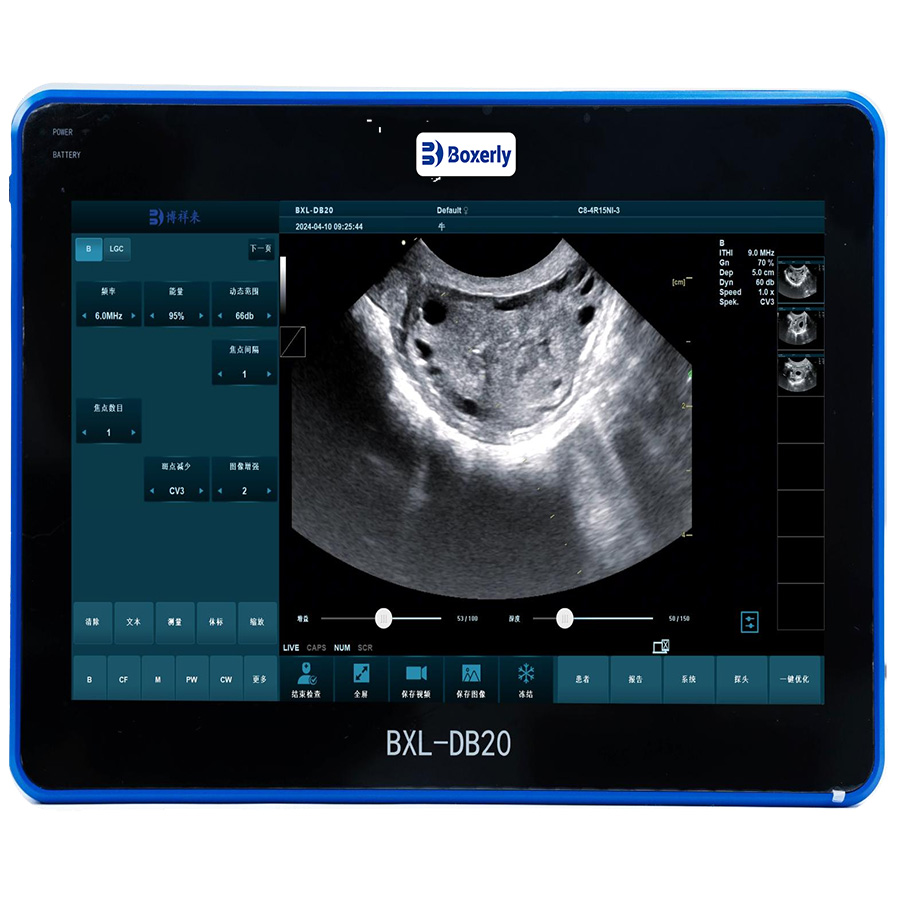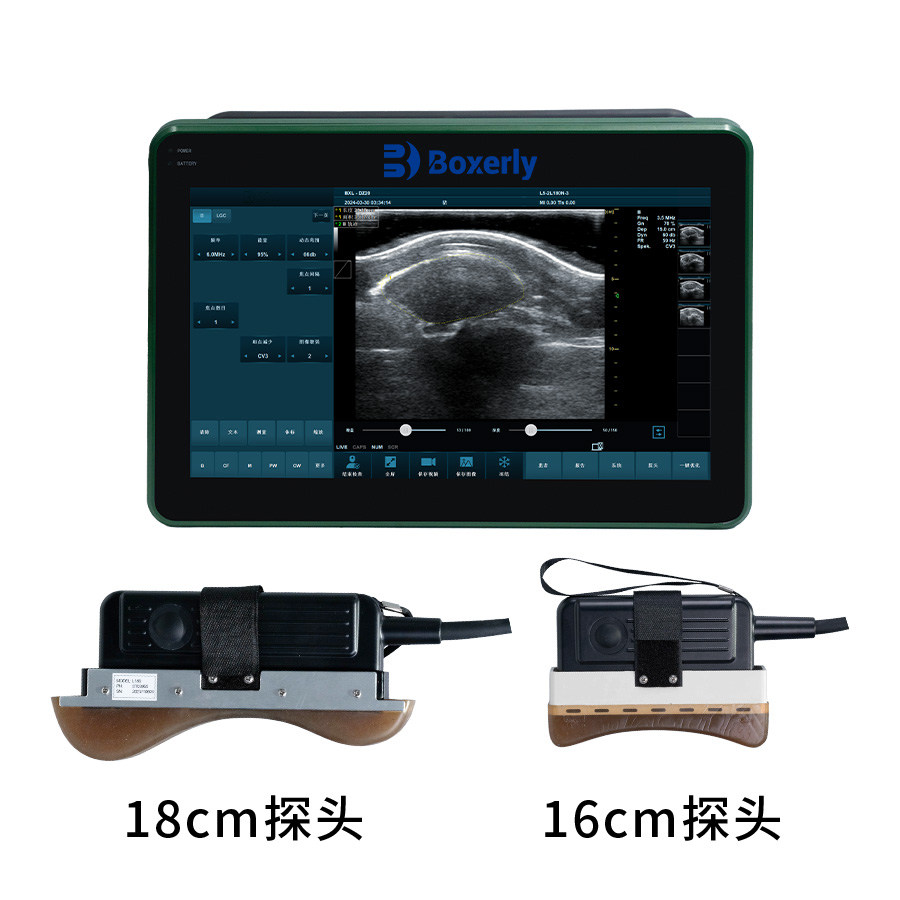Ultrasound, also known as sonography, is a non-invasive imaging technique that uses high-frequency sound waves to create real-time images of the inside of the body. It is widely used in both human and veterinary medicine to diagnose and monitor various medical conditions. This article will explore the common uses of ultrasound, what it can detect, and how it contributes to accurate and timely diagnoses.

1. Pregnancy Detection and Monitoring
One of the most well-known uses of ultrasound is pregnancy detection. In both humans and animals, ultrasound can confirm pregnancy and monitor fetal development. It helps healthcare providers or veterinarians:

Confirm Pregnancy: Ultrasound can detect a pregnancy early on, often as soon as 5-6 weeks in humans and a similar timeframe in animals.
Monitor Fetal Development: Regular ultrasounds throughout pregnancy help monitor the growth and health of the fetus.
Detect Complications: Ultrasound can identify issues such as multiple pregnancies, abnormal fetal positioning, or problems with the placenta.
In veterinary care, ultrasound is commonly used to confirm pregnancy in animals like dogs, cats, horses, and livestock.
2. Abdominal Organ Assessment
Ultrasound is frequently used to examine internal organs within the abdominal cavity. It can provide detailed images of various organs, helping detect abnormalities such as:
Liver Diseases: Ultrasound can detect conditions such as liver enlargement, cysts, tumors, and cirrhosis.
Kidney Problems: Kidney stones, cysts, or tumors can be identified using ultrasound, as well as blockages in the urinary tract.
Gallbladder Issues: Gallstones, inflammation, or blockages in the bile ducts can be visualized.
Pancreatic Disorders: Pancreatic inflammation, tumors, or cysts are often detected through abdominal ultrasound.
Abdominal Masses: Ultrasound can identify abnormal growths or masses within the abdomen, helping determine whether further diagnostic tests are needed.
3. Cardiac Health Evaluation (Echocardiography)
Ultrasound is essential in evaluating the heart's structure and function through a specific form called echocardiography. It is widely used to:
Diagnose Heart Disease: Ultrasound can detect issues such as heart valve abnormalities, congenital heart defects, and cardiomyopathy.
Assess Heart Function: It provides detailed images of how well the heart is pumping blood and how the valves are functioning.
Monitor Heart Failure: Ultrasound helps in monitoring patients with heart failure and assessing the effectiveness of treatment.
Detect Fluid Around the Heart: Conditions like pericardial effusion, where fluid builds up around the heart, can be identified using ultrasound.
Echocardiography is essential for diagnosing and managing many heart conditions in both humans and animals.
4. Thyroid Gland Disorders
Ultrasound is a valuable tool for examining the thyroid gland, which is located in the neck. It helps detect conditions such as:
Thyroid Nodules: Ultrasound can identify abnormal growths or lumps in the thyroid, which may require further testing to rule out cancer.
Thyroid Cysts: These fluid-filled sacs can be detected and monitored using ultrasound.
Goiters: Enlarged thyroid glands, often caused by iodine deficiency or autoimmune conditions, can be visualized with ultrasound.
If nodules or cysts are found, ultrasound-guided biopsies can be performed to collect tissue samples for further analysis.
5. Musculoskeletal Injuries
Ultrasound is not just limited to internal organs; it is also commonly used to assess injuries in muscles, tendons, and ligaments, particularly in athletes and active individuals. Some conditions detected by musculoskeletal ultrasound include:
Tendon Tears: Partial or complete tears in tendons, such as those in the shoulder or Achilles, can be diagnosed using ultrasound.
Ligament Injuries: Ultrasound can detect ligament strains or tears, commonly occurring in areas like the knee or ankle.
Muscle Strains: Muscle injuries, such as tears or hematomas, can be visualized with ultrasound.
Joint Inflammation: Ultrasound can reveal swelling in joints due to conditions like arthritis or bursitis.
Veterinary medicine also utilizes ultrasound to diagnose musculoskeletal issues in animals, especially in horses and working dogs.
6. Gynecological and Urological Conditions
Ultrasound is extensively used to examine the reproductive and urinary systems. For women, gynecological ultrasound is used to detect:
Ovarian Cysts: Fluid-filled sacs on the ovaries can be detected and monitored using ultrasound.
Uterine Fibroids: These non-cancerous growths in the uterus can be identified with ultrasound, helping doctors assess whether treatment is necessary.
Endometriosis: In some cases, ultrasound can help detect the presence of endometrial tissue growing outside the uterus.
In men, ultrasound is used to detect conditions such as:
Prostate Enlargement: Ultrasound can assess the size of the prostate gland, helping diagnose benign prostatic hyperplasia (BPH) or prostate cancer.
Testicular Abnormalities: Ultrasound can detect testicular torsion, tumors, or cysts.
7. Vascular Conditions
Ultrasound is a key diagnostic tool for detecting vascular conditions, especially through Doppler ultrasound, which measures the flow of blood through blood vessels. It can detect:
Blood Clots: Ultrasound can identify clots, particularly deep vein thrombosis (DVT), which can lead to serious complications if not treated.
Aneurysms: Abnormal bulges in blood vessels, such as in the abdominal aorta, can be detected with ultrasound.
Blocked Arteries: Ultrasound helps diagnose blocked or narrowed arteries, which can increase the risk of heart attack or stroke.
Varicose Veins: Ultrasound is used to assess the severity of varicose veins and monitor their progression.
8. Cancer Detection and Monitoring
While ultrasound cannot always confirm the presence of cancer, it can detect abnormal growths or masses that may require further testing, such as biopsies. Ultrasound is commonly used to:
Detect Tumors: Abnormal lumps in the breast, liver, kidney, or thyroid can be detected, and ultrasound can help guide biopsies to collect tissue samples.
Monitor Tumor Growth: Once a tumor is diagnosed, ultrasound can help monitor its size and progression.
Assess Lymph Nodes: Enlarged lymph nodes, which may indicate cancer or infections, can be visualized with ultrasound.
9. Emergency and Trauma Situations
In emergency settings, ultrasound can be a life-saving tool. It provides rapid, real-time imaging, which helps in detecting:
Internal Bleeding: Ultrasound can quickly assess if there is internal bleeding, especially after trauma or an accident.
Ruptured Organs: In cases of severe trauma, ultrasound helps identify ruptured organs like the spleen or liver.
Fluid Accumulation: Conditions such as pericardial effusion (fluid around the heart) or pleural effusion (fluid around the lungs) can be detected in emergency situations.
Conclusion
Ultrasound is a versatile, non-invasive imaging technique that plays a crucial role in detecting a wide range of medical conditions. From confirming pregnancies and assessing abdominal organs to diagnosing heart diseases, musculoskeletal injuries, and cancer, ultrasound provides valuable insights into the body’s internal workings. Its ability to deliver real-time images, combined with its safety and accuracy, makes it an essential diagnostic tool in both human and veterinary medicine.
link: https://www.bxlimage.com/ss/841.html
tags: ultrasound detection what can ultrasound detect medical ultrasound ultrasound diagnosis pregnancy ultrasound musculoskeletal ultrasound






